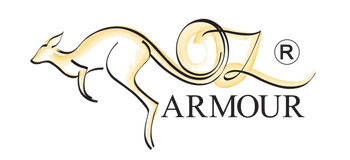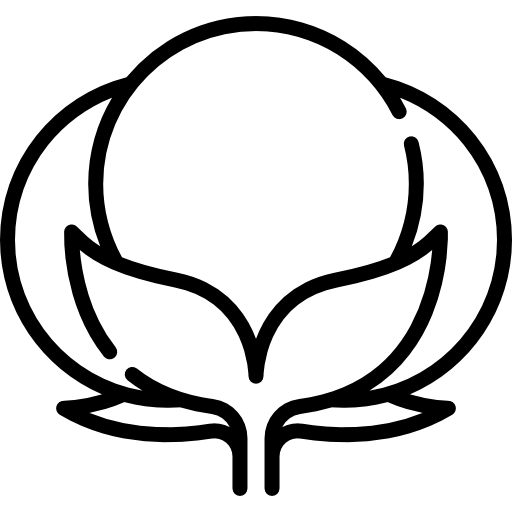I melari sono parte integrante dell'apicoltura, essenziali per ottimizzare la produzione di miele e garantire un alveare sano. Gestire correttamente i melari può migliorare significativamente il successo della tua apicoltura. Questa guida ti guiderà attraverso i passaggi necessari per gestire efficacemente i melari, dalla comprensione del loro scopo alla raccolta del miele e al mantenimento di un alveare sano.
UN miele super È una scatola che gli apicoltori posizionano sopra le camere di covata in un'arnia. Queste scatole contengono i telaini in cui le api immagazzinano il miele. I melari sono progettati specificamente per la conservazione del miele, consentendo agli apicoltori di raccogliere il miele senza disturbare la covata.
Super tipi di miele
Esistono vari tipi di melari, ognuno con usi specifici:
- Melari superficiali: Sono i più leggeri e maneggevoli, ideali per i principianti o per chi preferisce carichi più leggeri.
- Supers medi: Offrono un equilibrio tra capacità e peso, il che li rende una scelta popolare tra gli apicoltori.
- Supers Profondi: Sebbene contengano la maggior parte del miele, possono diventare piuttosto pesanti, il che può rappresentare una sfida durante la raccolta.
Conoscere i diversi tipi di melari può aiutarti a scegliere quello più adatto al tuo alveare, assicurando una produzione e una raccolta di miele efficienti.
Preparazione dell'arnia per i melari
Preparazione dell'alveare
Una corretta preparazione dell'arnia è fondamentale prima di aggiungere i melari. Inizia assicurandoti che l'arnia sia sana e robusta. Un'arnia debole potrebbe avere difficoltà a riempire il melario, con conseguente spreco di risorse e sforzi. Ecco alcuni passaggi per preparare l'arnia:
- Ispezionare l'alveare: Controllare la presenza di malattie o parassiti e intervenire immediatamente su eventuali problemi.
- Garantire uno spazio adeguato: Assicuratevi che le vostre nidiate non siano sovraffollate, poiché ciò potrebbe causare sciamature.
- Raccogli l'attrezzatura: Tieni a portata di mano tutti gli strumenti e le attrezzature necessarie, come una spazzola per api, un arniaio e un affumicatore.
Configurazione dell'alveare
Per allestire correttamente l'arnia è fondamentale posizionarla in una posizione ottimale. Scegliete un luogo soleggiato al mattino e riparato dai venti forti. Assicuratevi che l'arnia sia in piano e stabile per evitare che si ribalti, danneggiandola e disturbando le api.
Quando aggiungere i melari
Tempistica dei melari
Sapere quando aggiungere i melari è fondamentale per massimizzare la produzione di miele. Il momento migliore per aggiungere un melario è quando le api hanno occupato circa il 70-80% dello spazio disponibile negli alveari. Aggiungere il melario troppo presto può causare difficoltà nel mantenimento della temperatura dell'arnia e nella gestione dei parassiti. Al contrario, aggiungerlo troppo tardi può causare sovraffollamento e riduzione della produzione di miele.
Gestione dell'alveare
Una gestione efficace dell'alveare prevede ispezioni regolari per monitorare i progressi delle api. Cercate segnali come celle opercolate e la consistenza complessiva della popolazione. Questi indicatori vi aiuteranno a determinare il momento giusto per aggiungere i melari, garantendo condizioni ottimali per la produzione di miele.
Installazione corretta dei melari
Installazione di melari
Per mantenere un alveare produttivo è essenziale installare correttamente i melari.Ecco una guida passo passo:
- Preparare il Super: Assemblare i telaini e la base all'interno del melario. Assicurarsi che tutto sia pulito e privo di contaminanti.
- Posiziona il Super: Posizionare delicatamente il melario sopra le arnie esistenti. Assicurarsi che sia in piano e ben saldo in posizione.
- Monitorare le api: Dopo aver posizionato il melario, monitorate regolarmente l'arnia per vedere come le api si adattano e riempiono il nuovo spazio.
Tecniche di apicoltura
L'utilizzo di tecniche apistiche appropriate durante l'installazione dei melari può prevenire problemi comuni come la formazione di favi a bava (eccesso di favi prodotti dalle api) e una cattiva distribuzione del miele. Controllate regolarmente il melario per assicurarvi che le api utilizzino lo spazio in modo efficiente e apportate le modifiche necessarie.
Oltre a gestire efficacemente i melari, è essenziale garantire la sicurezza e il comfort degli apicoltori. OZ Armour offre una gamma di prodotti di alta qualità tute da apicoltore E tute da apicoltore per bambiniLe nostre tute sono progettate per offrire la massima protezione contro le punture d'api, consentendo al contempo facilità di movimento e comfort durante le ispezioni degli alveari e la raccolta del miele. Che tu sia un apicoltore esperto o che tu stia introducendo i tuoi figli al mondo dell'apicoltura, OZ Armour ti offre tute resistenti, traspiranti e su misura per soddisfare le esigenze di tutti gli apicoltori. Con OZ Armour, puoi concentrarti sul mantenimento di un alveare sano, sapendo di essere protetto.

Monitoraggio e manutenzione dei melari
Miele Super Manutenzione
Una manutenzione efficace dei melari può massimizzare la resa del miele. Ecco alcune buone pratiche:
- Ruota Supers: Una volta riempito il melario, sostituitelo con uno vuoto per favorire una produzione continua di miele.
- Ispezionare regolarmente: Ispezioni regolari aiutano a individuare precocemente eventuali problemi, come parassiti o malattie, che possono essere gestiti prima che colpiscano l'intero alveare.
- Mantenere la salute dell'alveare: Un alveare sano è più produttivo. Assicurati che le tue api abbiano accesso a risorse sufficienti, come nettare e polline, e gestisci tempestivamente eventuali segni di stress o malattia.
Ispezione dell'alveare
Ispezionare regolarmente l'arnia è fondamentale per mantenere la salute e la produttività delle api. Durante le ispezioni, cercate:
- Conservazione del miele: Controllare l'avanzamento della conservazione del miele nei melari.
- Presenza di parassiti: Cercare segni di parassiti come tarme della cera o piccoli coleotteri dell'alveare.
- Attività della Regina: Assicurarsi che la regina deponga le uova e che la covata sia sana.
Come affrontare i problemi comuni del miele
Super problemi con il miele
Gli apicoltori spesso affrontano diverse sfide con i melari. I problemi più comuni includono:
- Infestazioni di parassiti: Parassiti come le tarme della cera e i piccoli coleotteri dell'alveare possono invadere i melari, danneggiando il favo e il miele.
- Scarso flusso di miele: Un flusso di nettare irregolare può dare origine a una produzione di miele irregolare, rendendo difficile il riempimento dei melari.
Controllo dei parassiti
Un efficace controllo dei parassiti è fondamentale per proteggere i melari. Ecco alcune strategie:
- Monitoraggio regolare: Tieni d'occhio il tuo alveare per individuare eventuali segni di parassiti e intervieni immediatamente.
- Usa trappole: Posizionare trappole per parassiti come gli scarabei dell'alveare per ridurne la popolazione.
- Trattamenti chimici: Nei casi più gravi, prendere in considerazione l'uso di trattamenti chimici approvati per controllare le infestazioni di parassiti.
Raccolta del miele dai melari
Raccolta del miele
La raccolta del miele dai melari richiede un'attenta pianificazione e un'esecuzione accurata. Ecco alcune tecniche per un'estrazione efficiente del miele:
- Stappare il miele: Utilizzare un coltello o una forchetta per disopercolare per rimuovere gli opercoli di cera dalle celle del miele.
- Estrazione del miele: Inserire i telaini in uno smielatore, che sfrutta la forza centrifuga per estrarre il miele dal favo.
- Filtraggio del miele: Filtrare il miele estratto per rimuovere eventuali particelle di cera e detriti rimasti.
Estrazione del miele
Utilizzare gli strumenti e i metodi giusti per l'estrazione del miele garantisce un raccolto pulito ed efficiente. Investi in attrezzature apistiche di alta qualità, come estrattori e filtri, per semplificare il processo e mantenere la purezza del tuo miele.
Pulizia e conservazione dei melari
Pulizia dei melari
Pulire correttamente i melari dopo la raccolta è fondamentale per mantenerli longevi e prevenire contaminazioni. Seguite questi passaggi per pulire i melari:
- Rimuovere il miele residuo: Raschia via il miele rimasto dai telaini e dalle scatole.
- Lavare accuratamente: Per pulire i melari, usate acqua calda e un detergente delicato, evitando sostanze chimiche aggressive che potrebbero danneggiare le vostre api.
- Asciugare completamente: Prima di riporre i melari, assicurarsi che siano ben asciutti per evitare la formazione di muffa e funghi.
Conservazione dei melari
Conservare correttamente i melari assicura che siano pronti per la stagione successiva. Conservateli in un luogo fresco e asciutto e valutate l'utilizzo di naftalina o altri prodotti antiparassitari per proteggerli dai parassiti durante la bassa stagione.
Conclusione
In conclusione, gestire efficacemente i melari è fondamentale per mantenere un alveare produttivo e sano. Dalla scelta del tipo giusto di melario alla preparazione dell'arnia, dalla tempistica della loro installazione alla corretta manutenzione, ogni fase è fondamentale per ottimizzare la produzione di miele. Ispezioni regolari e un controllo proattivo dei parassiti sono essenziali per prevenire i problemi più comuni e massimizzare la resa del miele. Inoltre, è fondamentale utilizzare attrezzature apistiche di alta qualità, come le tute protettive offerte da OZ Armour, garantisce la tua sicurezza e il tuo comfort durante la gestione dell'alveare e la raccolta del miele. Seguendo queste buone pratiche, aiuterai le tue api a prosperare e a produrre miele abbondante e di alta qualità, stagione dopo stagione.












